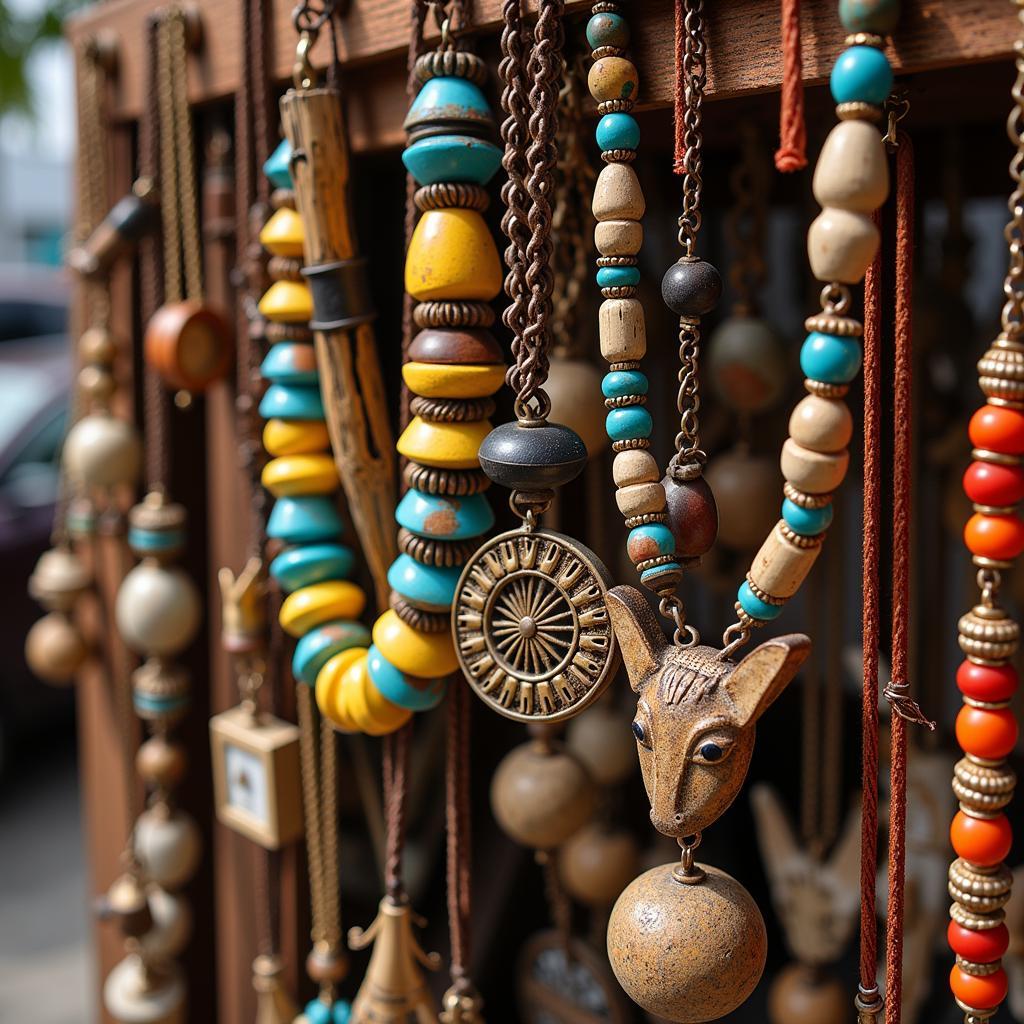The Majestic African Baobab Tree: A Symbol of Resilience
The African Baobab Tree, an icon of the African savanna, is more than just a tree; it’s a symbol of life, resilience, and cultural heritage. Its unique silhouette against the setting sun is instantly recognizable, sparking curiosity and wonder. This article will delve into the fascinating world of the baobab, exploring its biology, cultural significance, and the myriad ways it supports the ecosystem and local communities.
Unraveling the Mysteries of the African Baobab
The African baobab, scientifically known as Adansonia digitata, is a deciduous tree belonging to the Malvaceae family. It’s renowned for its enormous, swollen trunk, which can store vast amounts of water, enabling it to survive in harsh, arid environments. This remarkable adaptation allows the baobab to endure long periods of drought, providing a vital source of water for both wildlife and humans. The tree’s lifespan is equally impressive, with some specimens estimated to be thousands of years old, silently witnessing the ebb and flow of history. These ancient giants can reach heights of up to 25 meters and have a trunk circumference exceeding 40 meters, truly a testament to nature’s grandeur. The baobab is a keystone species, playing a crucial role in the savanna ecosystem, supporting a diverse range of organisms from insects to large mammals.
The Cultural Significance of the African Baobab: More Than Just a Tree
Across Africa, the baobab tree holds deep cultural and spiritual significance. In many communities, it’s revered as a sacred tree, often associated with ancestral spirits and traditional beliefs. The baobab features prominently in folklore, legends, and oral traditions, passed down through generations. Some communities believe that the baobab houses spirits, while others see it as a symbol of strength, resilience, and community. The tree often serves as a gathering place for meetings, ceremonies, and social events, further solidifying its role as a central figure in African Life. You can find intriguing facts about the African baobab tree by following the provided link.
The Many Uses of the African Baobab: A Gift from Nature
From its roots to its leaves, nearly every part of the African baobab tree is utilized by local communities. The fruit, rich in vitamin C and antioxidants, is used to make juices, jams, and other food products. The leaves are consumed as a vegetable, while the bark is used to make rope, baskets, and even clothing. The seeds, rich in oil, are used for cooking and cosmetics. The baobab has also been traditionally used in medicinal practices, highlighting its versatile nature and importance to local livelihoods. Learn about the African baobab tree leaf uses through this resource.
How Does the African Baobab Tree Survive?
The African baobab’s incredible resilience is largely due to its remarkable ability to store water within its massive trunk. This adaptation allows the tree to endure prolonged periods of drought, common in the savanna environment. The baobab’s thick, fire-resistant bark also protects it from wildfires, another frequent threat. Its deep root system allows it to access groundwater, further enhancing its survival capabilities. Interestingly, the baobab can even lose all its leaves during dry spells to conserve water, a testament to its adaptability and survival strategies. Are there mosquitoes related to the African baobab tree? Find out here.
Conclusion: The Enduring Legacy of the African Baobab Tree
The African baobab tree stands as a symbol of Africa’s rich biodiversity and cultural heritage. Its remarkable ability to thrive in harsh environments, coupled with its multifaceted uses, makes it an invaluable resource for both ecosystems and human communities. From providing sustenance and shelter to inspiring folklore and traditions, the African baobab tree continues to play a vital role in shaping the landscape and culture of Africa. Let’s work together to protect and preserve these magnificent trees for generations to come. Read some insightful quotes about the African baobab tree to further appreciate its significance. You can also discover fascinating insights about the presence of the African baobab tree in India in this article.
FAQ
- What is the average lifespan of an African baobab tree? Some baobabs are believed to live for thousands of years.
- What are the main uses of the baobab fruit? The fruit is used for food and beverages, rich in Vitamin C.
- Why is the baobab tree called the “tree of life”? Its various uses and ability to support life earn it this nickname.
- How does the baobab tree store water? Its large trunk acts as a reservoir.
- What is the cultural significance of the baobab tree? It’s often considered sacred and features in local folklore.
- Where can I find more information on African baobab tree facts? African baobab tree facts
- Is it true that the African baobab tree is present in India? African baobab tree in india
Common Scenarios and Questions:
-
Scenario: You’re planning a trip to Africa and want to see baobab trees in their natural habitat.
-
Question: Where are the best places to see baobab trees in Africa?
-
Scenario: You’re interested in incorporating baobab powder into your diet.
-
Question: What are the health benefits of baobab powder and how can I use it?
Further Exploration:
You might also be interested in learning about other iconic African trees or exploring the diverse ecosystems of the savanna. Check out other articles on our website for more information on African flora and fauna. For a deeper understanding, you might enjoy reading “African baobab tree quates”. African baobab tree quates
Call to Action:
Need more assistance? Contact us at Phone: +255768904061, Email: [email protected], or visit us at Mbarali DC Mawindi, Kangaga, Tanzania. We have a 24/7 customer support team ready to assist you.


